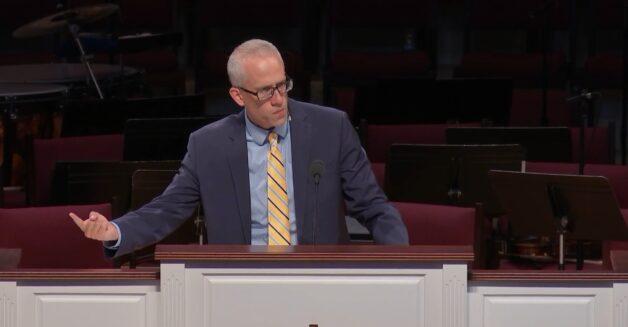
When Marin Luther rode into the town of Worms in 1521, he was not a confident man.
Luther had long protested against the corruption of the Roman Catholic Church—most famously in 1517 with the posting of his Ninety-five Theses on the door of the Castle Church in Wittenberg. After years of ensuing controversy, Pope Leo X finally excommunicated the German reformer in January 1521. In April of that year, Luther was summoned to appear before the Imperial Diet (Assembly) at Worms to defend his controversial beliefs before the Holy Roman Emperor Charles V. We may think of Luther as big and brash and full of swagger, but he came into Worms so intimidated that on the first day of his defense his statements could barely be understood. The Catholic authorities were threatening to banish him from Charles’s empire—a vast territory centered in Germany and spanning central Europe. Luther’s livelihood as a professor, and his very life, were at stake.
Luther knew what the authorities wanted him to do: recant his words criticizing the Catholic Church for its teaching and practices. However fearful he may have been at the outset, by the end of the interrogation Luther had gathered his strength. “My conscience is captive to the Word of God,” Luther declared. “Thus I cannot and will not repent, for going against my conscience is neither safe nor salutary. I can do no other. Here I stand. God help me. Amen.”
On May 26, 1521, the Emperor rendered his decision. Luther was to be placed under a “ban and double ban.” This Edict of Worms implored the men and women of the empire:
. . . not to take the aforementioned Martin Luther into your houses, not to receive him at court, to give him neither food nor drink, not to hide him, to afford him no help, following, support, or encouragement, either clandestinely or publicly, through words or work. Where you can get him, seize him and empower him, you should capture him and send him to us under tight security.
Luther was now a man on the run. The powers that be were adamant that Luther and his writings—and anyone sympathetic to his ideas—must be silenced. And yet, Luther was willing to endure all this—expulsion, danger, maybe even death—for the sake of his conscience. In a very real sense, you could say that the history of the Reformation, the history of Europe, and the history of the entire world was, in God’s providence, altered because one man refused to violate his conscience.
Praise God Luther took his conscience seriously.
I wonder if you and I are quite so careful with ours.
*****
Many of you will know the story of Pinocchio. I remember the story as I learned it from the Disney cartoon version. The woodcarver Gepetto wants his puppet Pinocchio to be a real boy. Once this wish is granted, Jiminy Cricket is assigned to be Pinocchio’s conscience.
As a child, I was terrified by the movie, because, of course, Pinocchio doesn’t stay a little boy for long. He falls in with the wrong crowd, and his lack of truth-telling gets him into trouble. His nose grows long as a sign that lies eventually become as plain as the nose on your face. As he continues to lie and ignore Jiminy Cricket, Pinocchio starts turning into a donkey. He blurts our a “hee-haw” in the middle of sentences. He starts braying. Donkey ears pop out of his head. A donkey tail sprouts from his backside. The boy is becoming an animal.
There is more going on in this story than we realize as children. The crux of the tale is that as Pinocchio ignores his conscience, he becomes more like a beast. He becomes something less than human. A conscience is not only indispensable to living a life pleasing to God and enjoying peace with God; it is essential for living as the human beings God made us to be.
The post above is an excerpt from a new book I’ve written entitled The Art of Turning: From to Christ for a Joyfully Clear Conscience (10Publishing). This brief book (40 pages) looks at what the conscience is, how it misfires, and how to have a clear conscience in Christ.



